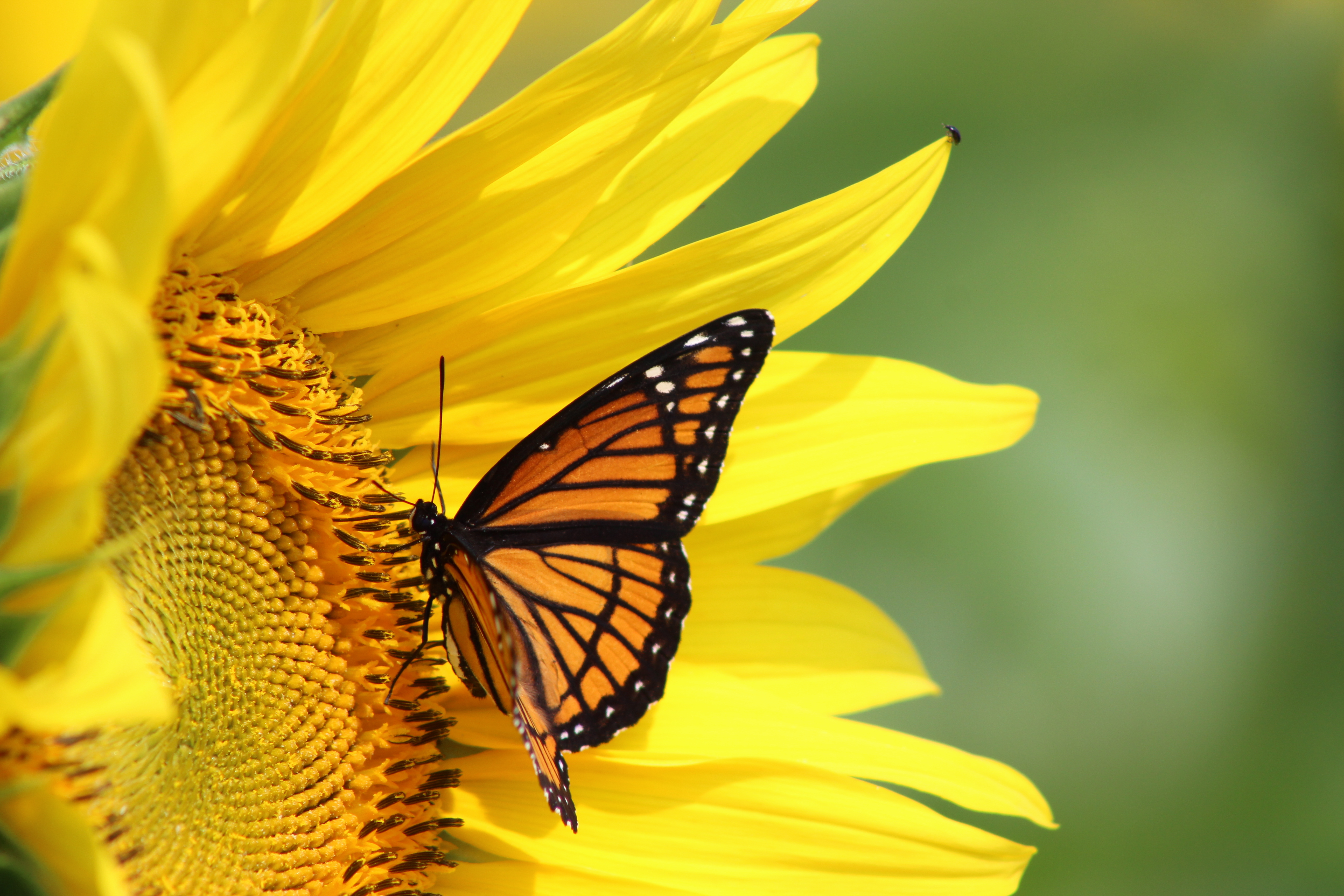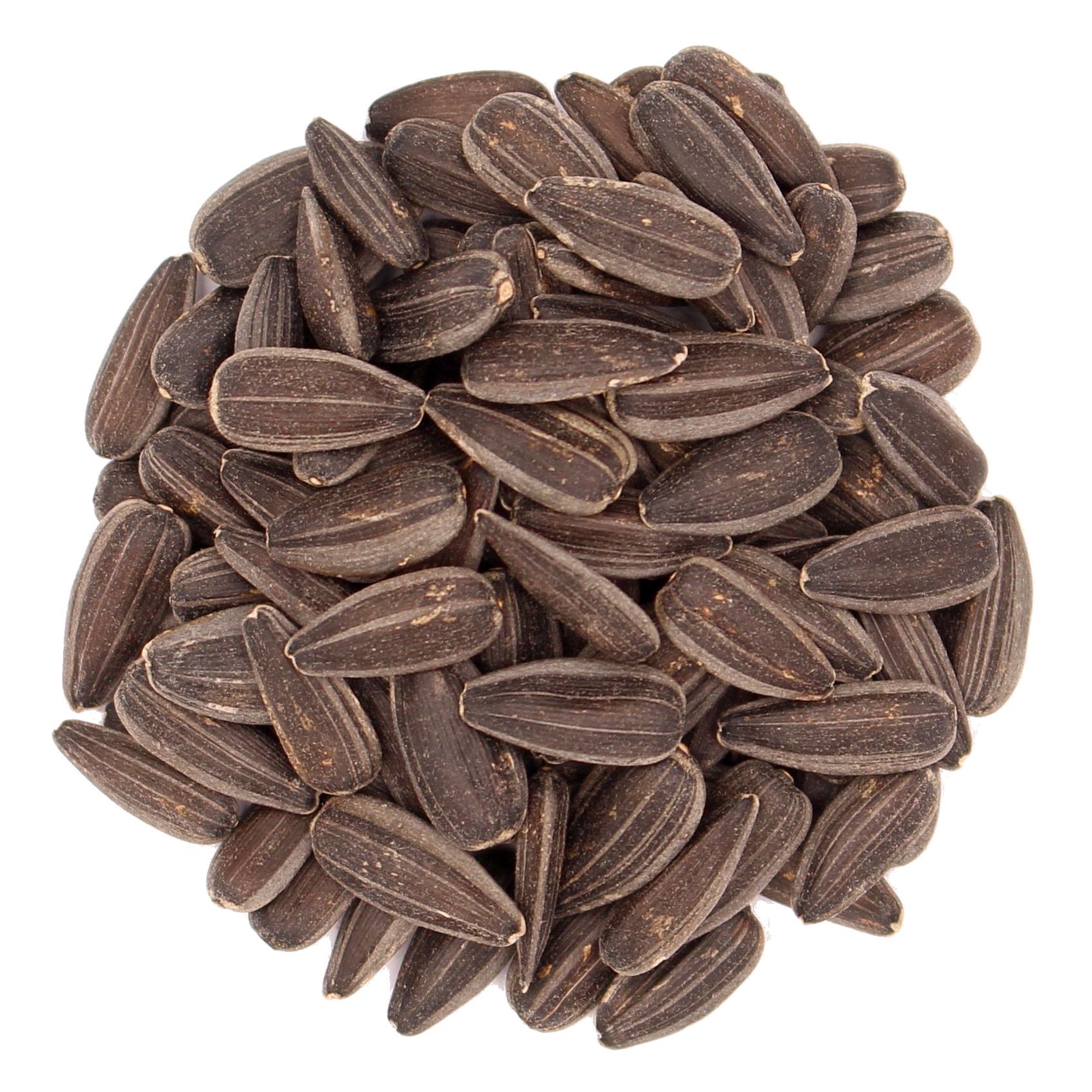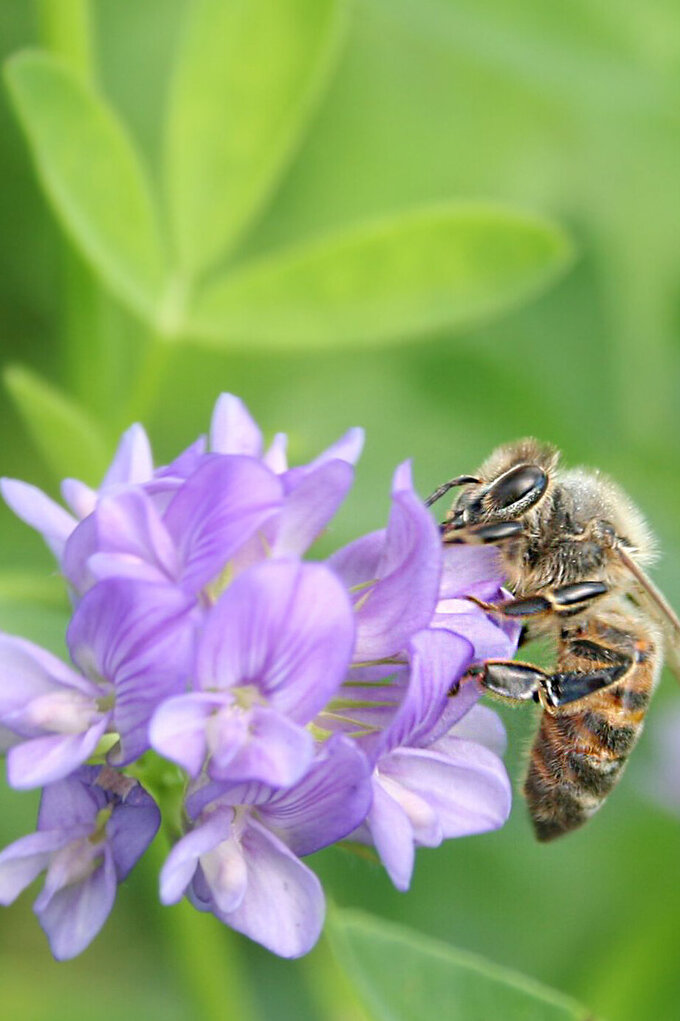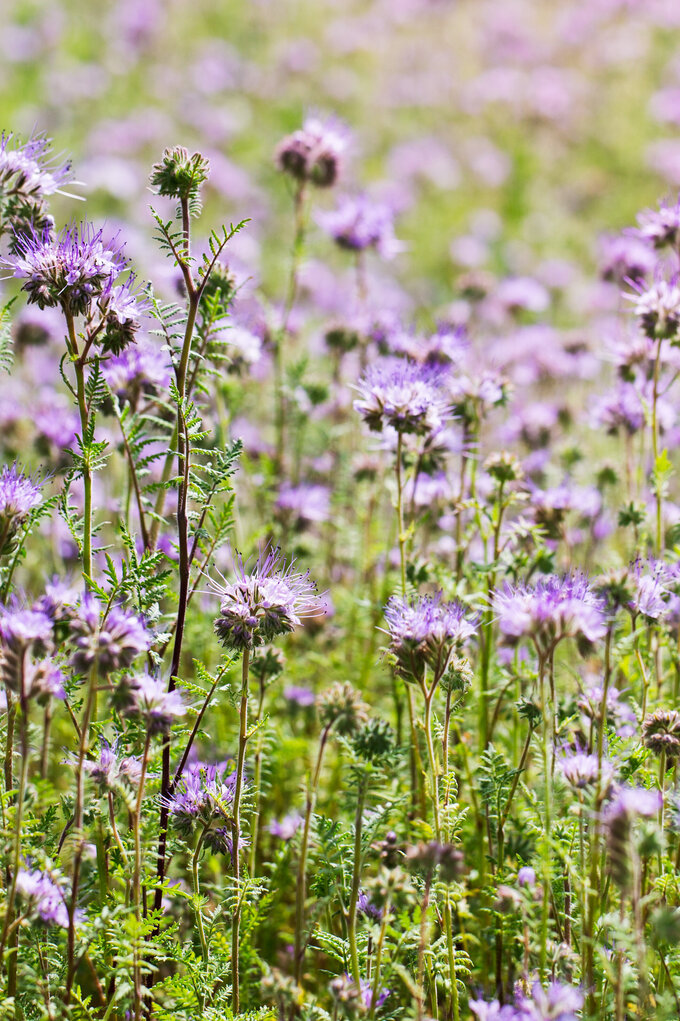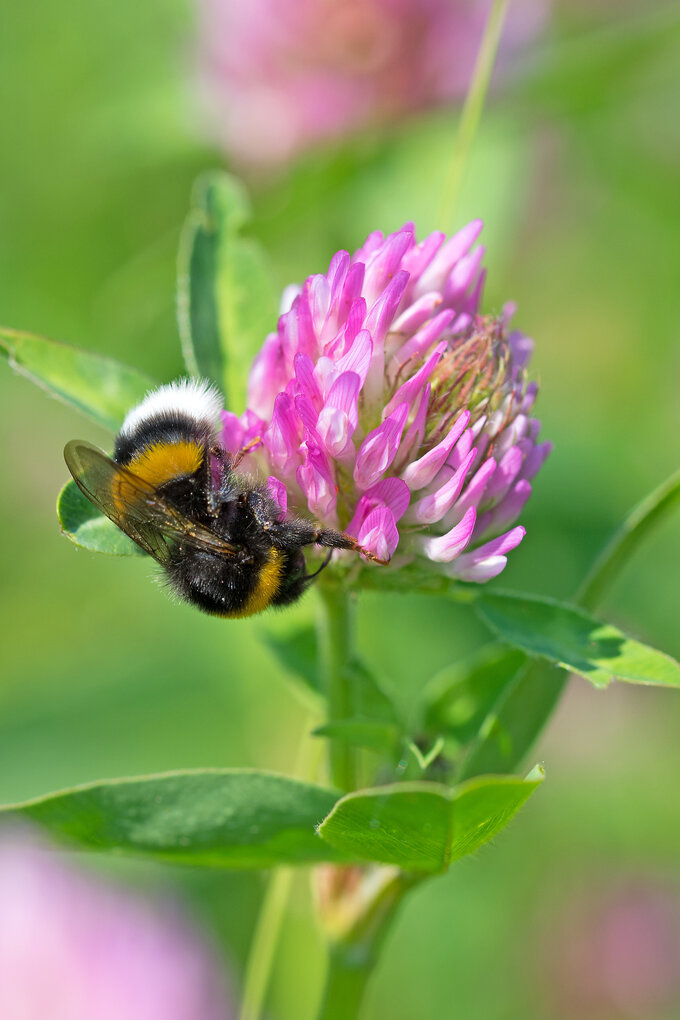In focus: Sunflowers
Sunflowers
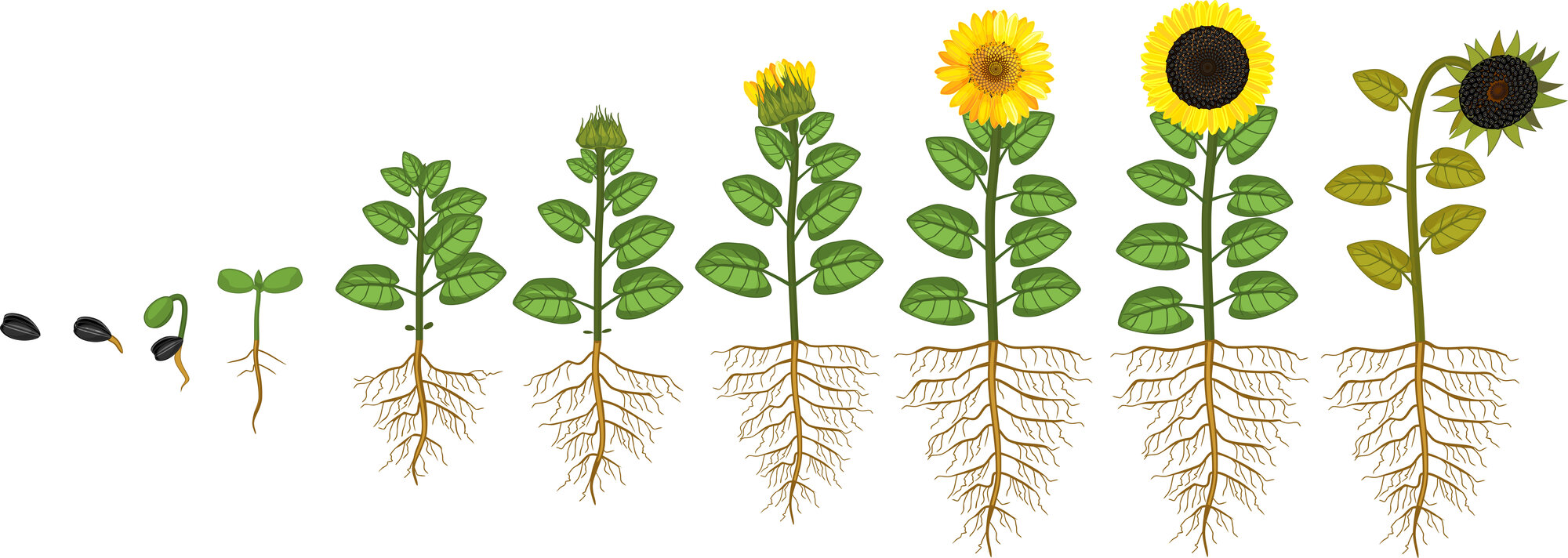
Helianthus annuus
Other names: Common sunflower, wild sunflower, annual sunflower
| Family: Asteraceae (aster family) | Thousand grain weight: 60-80 g |
| Subfamily: Asteroideae | Plant height: 1-2 m (occasionally up to 3 m) |
| Genus: Sunflowers | Sowing rate: 5 g/m² |
| Species: Sunflowers | Number of chromosomes: 2n = 34 |
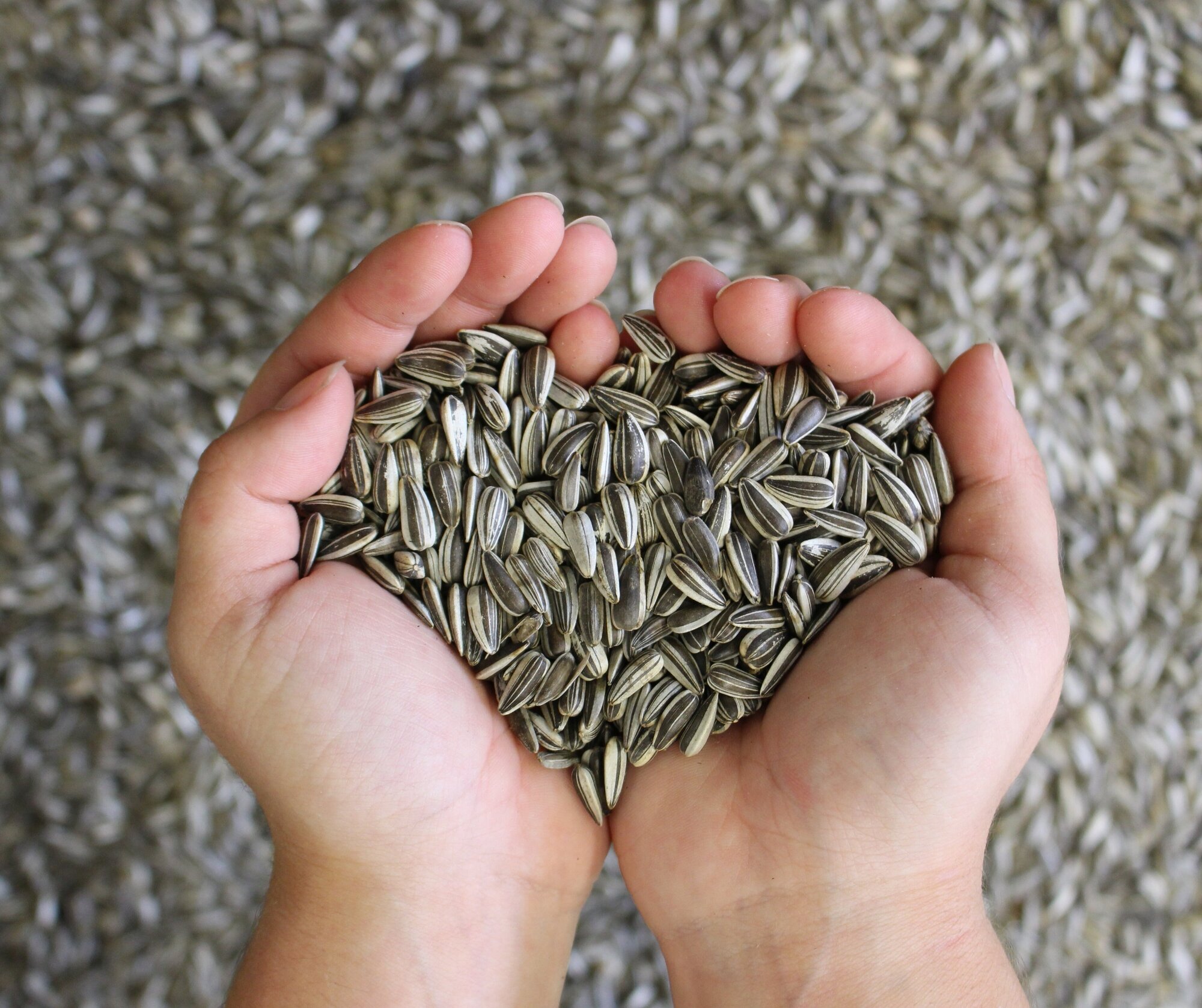
Origin and importance
The name of the genus, Helianthus, comes from a combination of the Greek words helios (sun) and anthos (flower). The Latin species name annuus is a reference to the plant’s annual growth period. Its English name, the sunflower, is a nod to its sundial-like function, with flowers that always lean in the direction of the sun on a clear day.
The Incas, who thought of themselves as children of the sun, revered the sunflower as a symbol for their sun god. The sunflower is particularly known for its strikingly yellow and orange flowers.
Sunflowers originally come from North and Central America. Archaeological excavations have been able to confirm that they have been cultivated since around 2500 BC in Mexico City and the Mississippi region. Spanish sailors first brought sunflower seeds to Europe in 1552, where they were initially only used as ornamental plants. The first report on sunflowers in a book of herbs came in 1590, indicating that it had become a feature of European gardens by 1584, and remains so to the present day. Sunflower seeds began to be roasted in the 17th century as a replacement for coffee. Today, sunflowers are grown for many different purposes: as an ornamental plant in gardens, as a source of nutrients for animals and for human consumption.
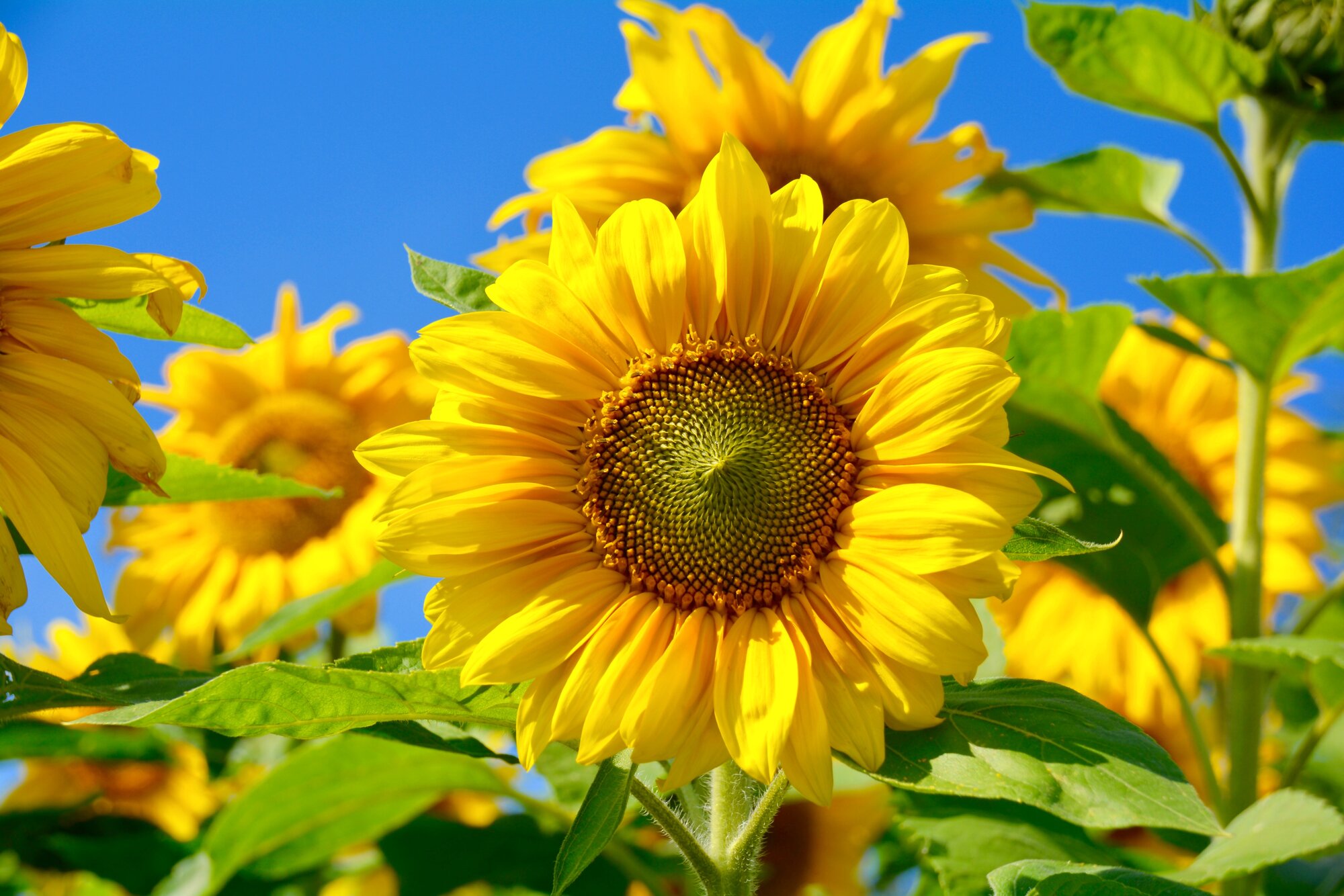
Use
Sunflowers can be divided into four different types, based on whether they are used for fodder, oil, edible seeds or flowers.
With its remarkably high leaf mass, the fodder type can be used to great effect as a green forage plant for animals or as silage. It is also well-suited for use as green manure. The oil type sunflower is the most widely cultivated in Germany, and is characterised by a particularly high share of disc florets and seeds with a low shell mass. This type is well-suited for use in the production of sunflower oil, fryer oil or margarine. By way of example, the seeds of 60 sunflower plants are required to produce one litre of sunflower oil. The edible seed type is ideal for food production, forming particularly large, tasty, loosely packed seeds that can be easily harvested. The seeds are a wonderful addition to Muesli, salads and baked foods, or simply eaten on their own. Gardens are generally the home of the ornamental type, which can produce several flowers per plant.
In addition to their economic importance, the oil and seeds harvested from sunflowers have been linked to curative health benefits. Sunflower oil, for example, is used in medicine and pharmacies in a variety of creams and ointments.
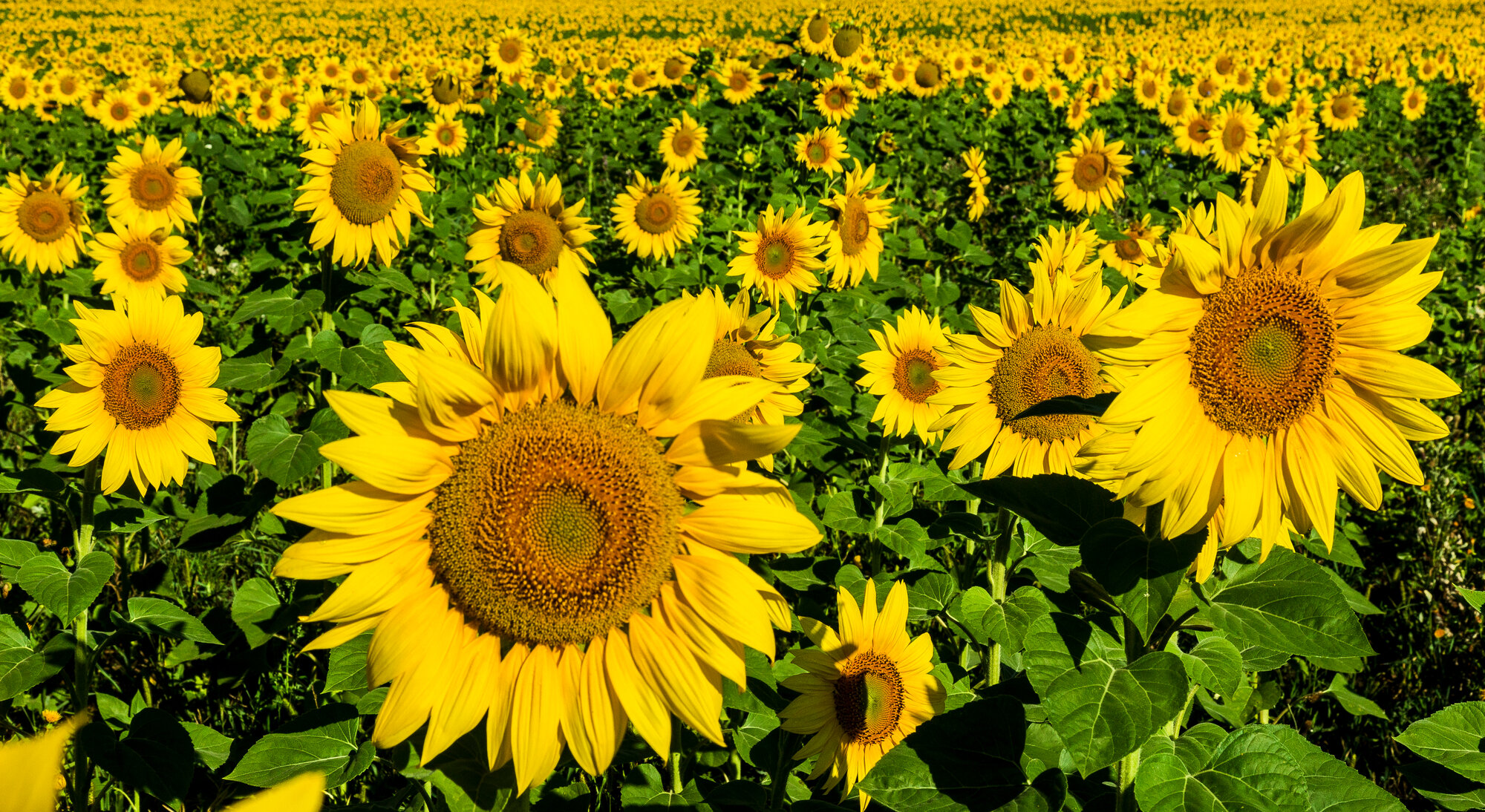
Cultivation
Sunflowers can be divided into two main varieties: dwarf varieties remain quite small, generally growing to heights of less than 70 cm, though this makes them considerably more stable than taller varieties. These so-called giant sunflowers can reach heights of up to 4-5 m. But how do sunflowers grow so tall without tipping over? Their very deep taproots extend deep into the ground, root firmly and provide the stability that the stem needs to remain robust as it grows upwards.
Sunflowers thrive best on wet, nutrient-rich soils on sunny sites that are protected from the wind. Their fast growth means that they require a lot of water. Because of how large the flowers are, they take a very long time to fully develop. In rainy summers, therefore, flowers may only bloom for a very short period and start to decay quickly.
The annual plant is not winter-hardy and can be sown outdoors beginning in April, since sunflowers require warm temperatures and lots of sun to grow. Their growth begins with large, heart-shaped leaves with a rough upper surface emerging from the stem. This is followed by the spring emergence of the sunflower buds, which will grow into the large flowers in summer. The bright flowers with their bold, vibrant colours make sunflowers an absolute insect magnet, drawing a number of beneficial insects, especially bumblebees.
Pollinated disc flowers then develop sunflower seeds during the late summer, which can serve as a food source for many species of birds and rodents. Since sunflowers are not winter-hardy, the plants begin to die away beginning with the first October frosts. If they are left standing through the winter, sunflowers also provide a habitat and source of food for garden birds in the cold season. Sunflowers also work wonderfully as cut flowers.

